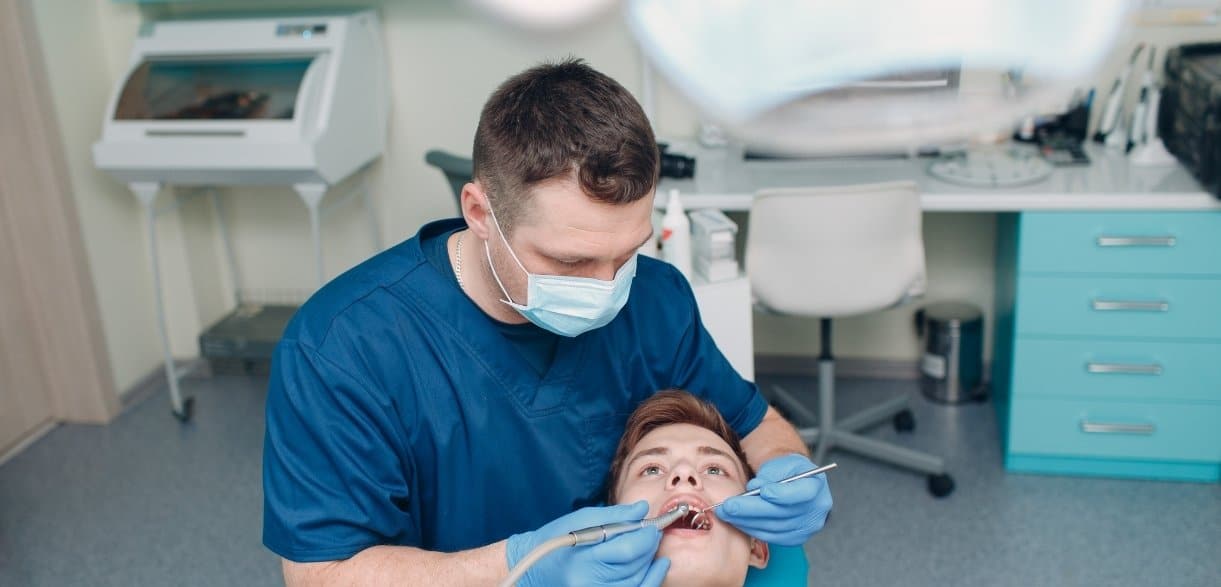
Dental emergencies can happen at any time, often when you least expect them. Whether it’s a broken tooth, severe toothache, or a knocked-out tooth, knowing how to handle a dental emergency at home can make a huge difference in the outcome. Immediate care can help minimize pain, prevent further damage, and increase the chances of a successful recovery. While it’s always best to seek professional care from a dentist, there are steps you can take to address the situation before getting to the office.
Here’s what you need to know if you ever find yourself facing a dental emergency at home.
1. Toothaches and Pain Relief
A toothache can be one of the most common dental emergencies. The pain can range from mild to severe, often making it difficult to focus on anything else. Here’s how to handle a dental emergency at home when you’re dealing with a toothache:
- Rinse your mouth with warm water to clean out any debris.
- Floss carefully to remove any trapped food particles between your teeth.
- Use a cold compress on the outside of your cheek to reduce swelling and numb the pain.
- Take over-the-counter pain relievers like ibuprofen or acetaminophen to help manage the discomfort. Be sure to follow the directions on the label.
If the pain persists, it’s essential to visit a dental professional as soon as possible to identify the underlying cause.
2. Knocked-Out Tooth
A knocked-out tooth is one of the more alarming dental emergencies, but quick action can improve the chances of saving the tooth. Here’s how to handle a dental emergency at home when this happens:
- Pick up the tooth carefully by the crown (the top part) and avoid touching the root.
- Rinse the tooth gently with water if it’s dirty, but don’t scrub or remove any tissue attached to it.
- Place the tooth back in its socket if possible, keeping it in place by biting down on a clean cloth or gauze.
- If you can’t place it back in the socket, store the tooth in a container of milk or your saliva until you can see an emergency dentist in Midwest City. This will help preserve the tooth’s viability.
In this case, time is crucial, and the quicker you seek professional help, the better the chances of saving the tooth.
3. Broken or Cracked Tooth
A broken or cracked tooth can be painful and potentially lead to infection if not properly treated. Here’s how you can handle a dental emergency at home if you experience a broken tooth:
- Rinse your mouth with warm water to clean the area and reduce the risk of infection.
- Apply a cold compress to reduce swelling if there’s any pain or bruising.
- Use dental wax or a piece of gauze to cover the sharp edges of the broken tooth to avoid injuring your gums or the inside of your mouth.
- Take over-the-counter pain relievers if needed to help with any discomfort.
Avoid chewing on the broken tooth to prevent further damage, and see your dentist as soon as possible to get it properly treated.
4. Lost Filling or Crown
A lost filling or crown can be uncomfortable, leaving the tooth exposed to potential infection or further damage. Here’s what to do if you’re dealing with this dental emergency at home:
- Clean the area with warm water to remove any debris.
- Use temporary dental cement (available over the counter) to cover the exposed area until you can see your dentist.
- If you can’t get dental cement, place a small piece of sugar-free gum in the cavity to cover it temporarily.
- Avoid chewing on the affected tooth to prevent discomfort or further damage.
This is a situation where quick action is important to prevent infection or further damage to the tooth.
5. Soft Tissue Injuries
Injuries to the soft tissues of your mouth, including your gums, lips, or cheeks, can cause bleeding and discomfort. Here’s how to handle a dental emergency at home for soft tissue injuries:
- Clean the area gently with warm water.
- Apply pressure with a clean cloth or gauze to stop any bleeding. If the bleeding doesn’t stop after 10 minutes, seek immediate help.
- Use a cold compress to reduce swelling and numb the pain.
- Avoid eating hard or hot foods that may irritate the injury.
When to Seek Professional Help?
In some situations, handling a dental emergency at home is only a temporary solution. After taking the initial steps to manage the emergency, it’s important to seek professional care as soon as possible. Whether it’s an infection, severe pain, or significant injury, a dentist will be able to assess the damage and provide the necessary treatment.
If you’re in Midwest City, seeking help from an emergency dentist is your best course of action. A dental professional can ensure that the injury is properly treated and help prevent complications down the line.
Handling a dental emergency at home can alleviate pain and prevent further damage until you can see a dentist. Whether it’s a toothache, knocked-out tooth, broken tooth, or soft tissue injury, staying calm and following the right steps is key. While these at-home measures can help, remember that seeing a dentist as soon as possible is crucial to ensure long-term oral health. If you’re ever unsure about how to manage a dental emergency, don’t hesitate to contact your dentist or visit an emergency clinic for professional care.



